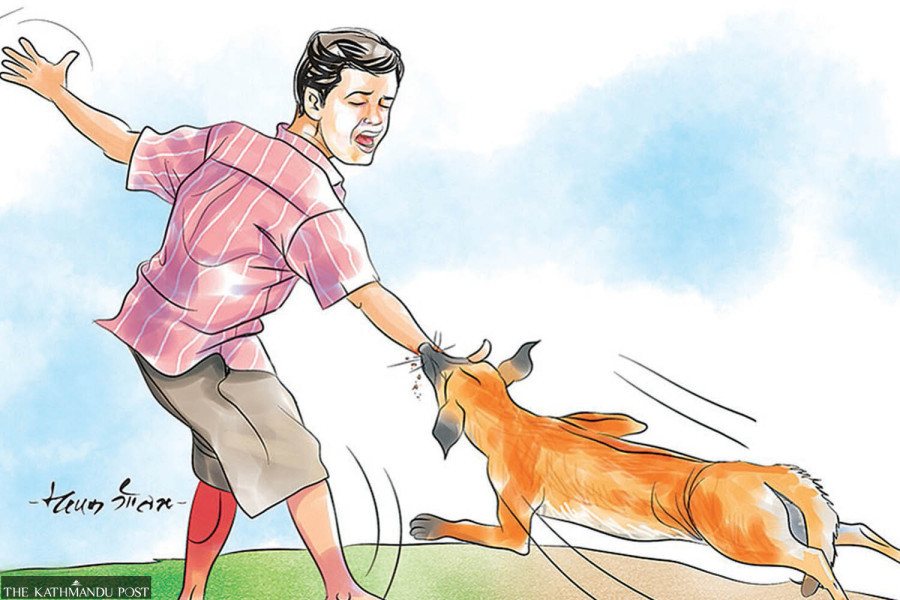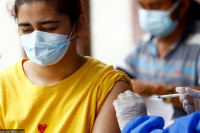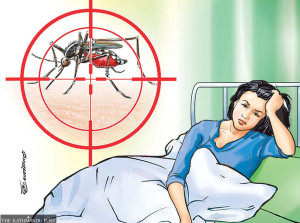Health
Rabies kills three, threatens hundreds in remote Dhading villages
Officials launch mass vaccination drive after two victims with no recent dogbite history died from rabies.
Post Report
As many as three people died from rabies infection, and hundreds others from two remote villages—Chotesh and Bunpung in ward 6 of Benighat Rorang Rural Municipality of Dhading district—are feared to have come in close contact with infected dogs.
Officials fear a massive outbreak of the deadly virus in the affected villages, as the three deaths occurred within a month and a half.
“We have already launched a mass vaccination campaign against the rabies virus in the affected villages,” said Dr Chandra Bhal Jha, director at the Epidemiology and Disease Control Division. “Nearly 300 people from the affected villages have been administered the anti-rabies vaccine, and vaccination is ongoing.”
Rabies is a deadly viral disease spread from the saliva of infected animals, especially dogs and jackals. The virus is transmitted via the bite of dogs or other infected animals. Dog bites are responsible for almost all rabies deaths in Nepal. Doctors say if the anti-rabies vaccine is administered on time, rabies is 100 percent preventable, but if clinical symptoms start appearing, the disease is always fatal.
Officials at the Health Office in Dhading said that health workers have been dispatched to the affected villages for mass vaccination.
Two of the recent victims—a 52-year-old male and an 82-year-old elderly woman—were taken to the basic health service centres of their respective local units for treatment after showing symptoms of rabies infection. Health workers referred them to Sukraraj Tropical and Infectious Hospital in Kathmandu for further treatment.
“Doctors at the Sukraraj Hospital returned the patients to the health facilities they came from,”said Toyanath Chhatkuli, a public health inspector at the Health Office. “They died immediately after returning. The bodies were taken for cremation directly from the health facility.”
Although both victims were not recently bitten by dogs or other animals, they died of rabies, according to Chhatkuli.
Chotesh and Bunpung are remote Chepang settlements surrounded by jungles. People in the villages feed dogs on their plates and sleep alongside them, according to health officials.
Nepal aims to eliminate dog-transmitted rabies by 2030, a target the World Health Organisation set. However, the Health Ministry’s data show that dog-bite cases have been rising every year. In the fiscal year 2021-22, over 56,000 people throughout the country sought anti-rabies vaccination in state-run health facilities every year. It is estimated that thousands of other dog bite victims seek treatment at private centres.
It is estimated that over 100 people die of rabies every year throughout the country; however, the Ministry of Health and Population has records showing only around two dozen deaths on average.
Doctors say not all dog bite incidents appear on record or all victims seek treatment, which is a challenge to preventing rabies deaths and a major obstacle to meeting the goal of eliminating dog-transmitted rabies by 2030.
Another hindrance to preventing deaths from rabies and meeting the target is the lack of awareness and availability of treatment in the major cities only, experts say.
Of the total animal bite victims, especially dog bite victims, 40 percent are children under 15 years old. Due to the fear of getting scolded by parents or the fear of injections, children generally do not tell their parents about such incidents, according to doctors.
And due to lack of awareness about the risks, parents too do not take the dog bites seriously and seek vaccination. There are also some people who think that anti-rabies vaccination is not required if the dog is a pet.
Rabies, according to the World Health Organisation, causes 59,000 agonising and painful deaths globally every year, one person every nine minutes, mostly children and the poor. The disease, while fatal, is 100 percent preventable if there is access to vaccines and life-saving treatment in the event of dog bites.




 17.12°C Kathmandu
17.12°C Kathmandu













